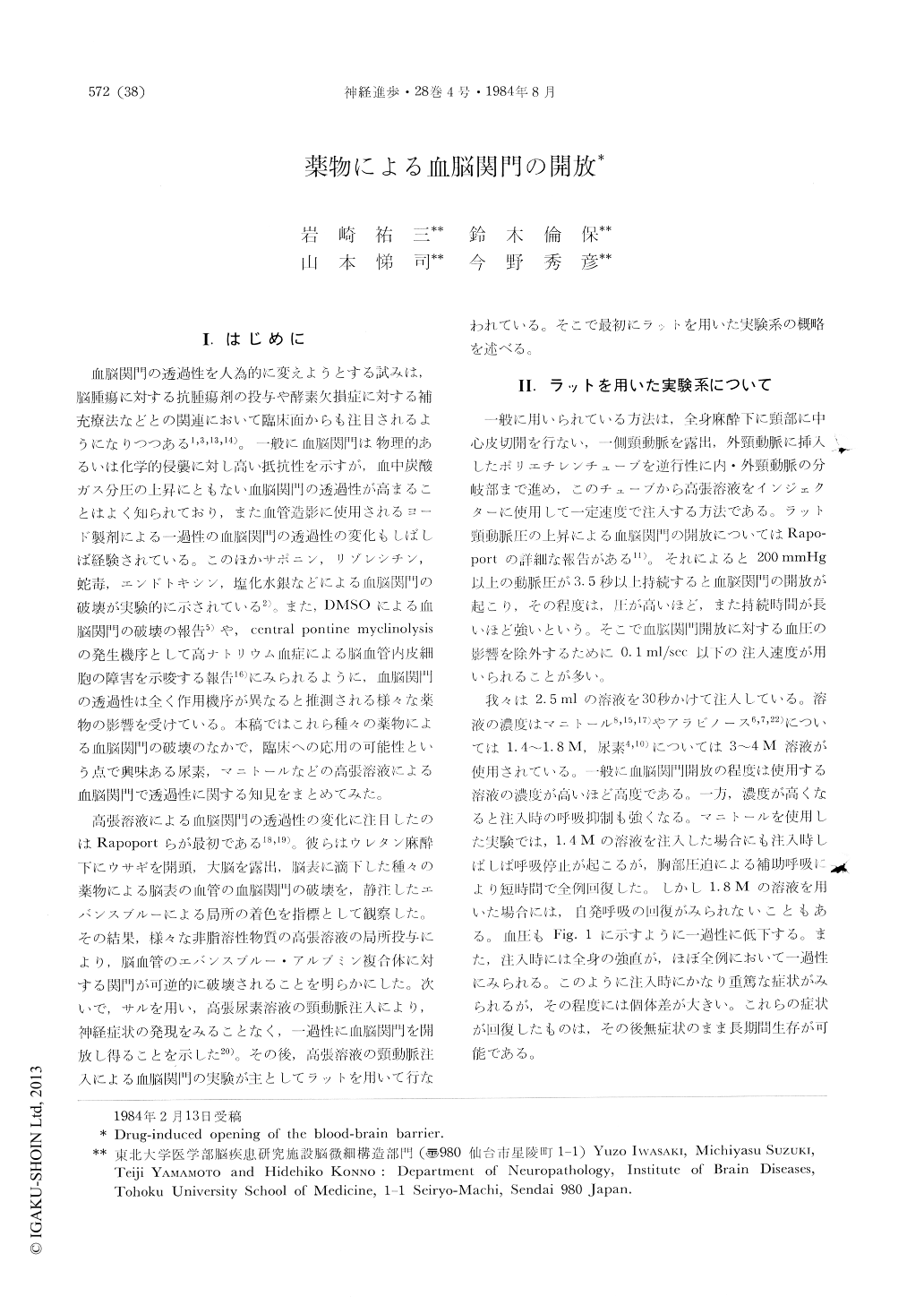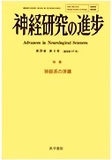Japanese
English
- 有料閲覧
- Abstract 文献概要
- 1ページ目 Look Inside
I.はじめに
血脳関門の透過性を人為的に変えようとする試みは,脳腫瘍に対する抗腫瘍剤の投与や酵素欠損症に対する補充療法などとの関連において臨床面からも注目されるようになりつつある1,3,13,14)。一般に血脳関門は物理的あるいは化学的侵襲に対し高い抵抗性を示すが,血中炭酸ガス分圧の上昇にともない血脳関門の透過性が高まることはよく知られており,また血管造影に使用されるヨード製剤による自過性の血脳関門の透過性の変化もしばしば経験されている。このほかサポニン,リゾレシチン,蛇毒,エンドトキシン,塩化水銀などによる血脳関門の破壊が実験的に示されている2)。また,DMSOによる血脳関門の破壊の報告5)や,central pontine myelinolysisの発生機序として高ナトリウム血症による脳血管内皮細胞の障害を示唆する報告16)にみられるように,血脳関門の透過性は全く作用機序が異なると推測される様々な薬物の影響を受けている。本稿ではこれら種々の薬物による血脳関門の破壊のなかで,臨床への応用の可能性という点で興味ある尿素,マニトールなどの高張溶液による血脳関門で透過性に関する知見をまとめてみた。
高張溶液による血脳関門の透過性の変化に注目したのはRapoportらが最初である18,19)。
Abstract
Recent studies on the reversible opening of the BBB were reviewed. At present, two possibilities arc postulated as the mechanism of increased permeability of the BBB after intracarotid infu-sion of hyperosmotic electrolytes or solutes with low ether-water or oil-water coefficients; i ) open-ing of the tight junction and ii ) activation of tubulo-channel system of the vascular endothelium. Neither of them, however, has been satisfactorily substantiated. A summary of our experiments in rats with hyperosmotic mannitol was presented.

Copyright © 1984, Igaku-Shoin Ltd. All rights reserved.


